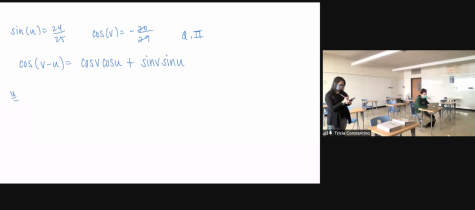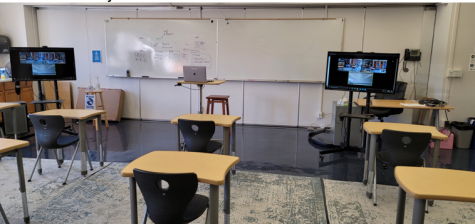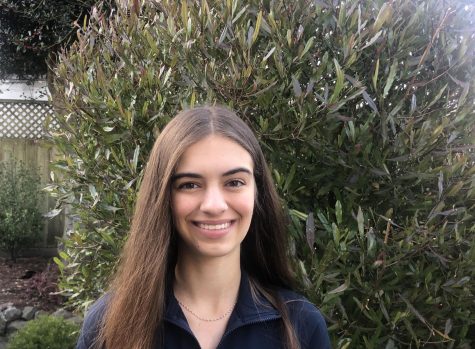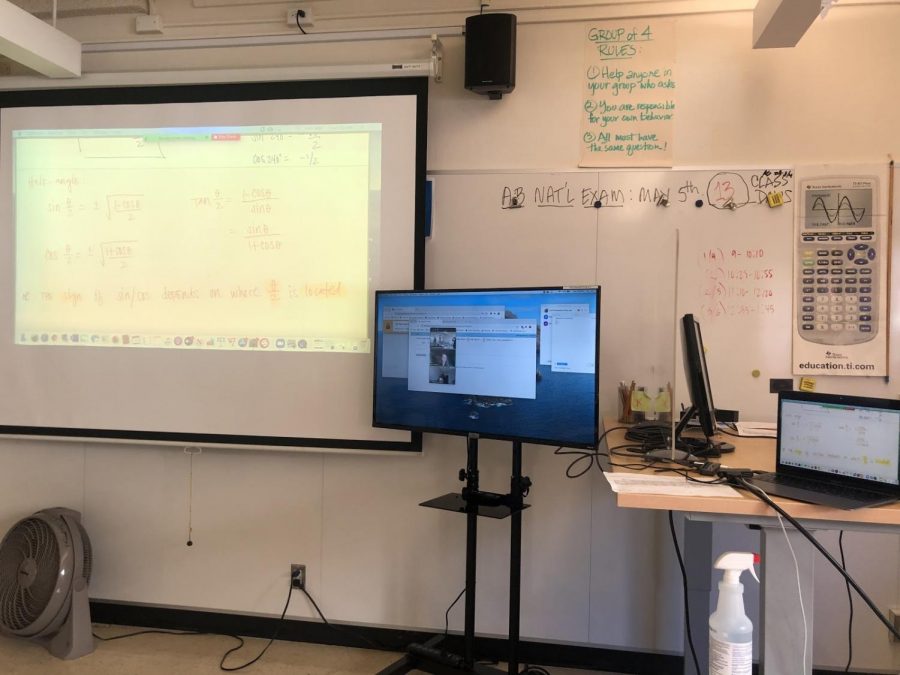The Shift to Hybrid Learning: SHC’s New Normal
Many teachers at SHC synchronously teach students both in person and online at the same time.
As SHC gradually returns to in-person learning, many things look different both in and out of class. One of the most notable changes is that when one cohort is on campus, the other two cohorts learn from home. For students and teachers alike, the transition to hybrid learning feels surreal. Although some students are back at school, the class format is quite different from what we were used to before the pandemic. In a discussion about hybrid learning, Addy Ryan ‘23 commented, “It reminds me of the adjustment to distance learning ten months ago when the pandemic first began.”
Effectively teaching students who are at home and at school presents a unique challenge for teachers. After a complete overhaul of their teaching methods to adapt to distance learning, teachers now have to revise their lesson plans and teaching strategies yet again to fit a hybrid environment. Mr. Standley, Instructor of Social Studies and Computer Science, explained, “The biggest challenge has been setting up a system that allows me to teach synchronously to both students at home and in the classroom.”

In preparation for students to return to campus, Mr. Standley and many other teachers reconfigured their classrooms and set up new technology. In mid-January, students were able to experience these adjustments, both at home and in the classroom. While most of the teachers who chose to continue teaching at a distance conducted their class in the same manner as they did prior to the switch to hybrid learning, the changes made by teachers on campus are much more noticeable. In my first few days back on campus, it became apparent that each teacher organized their hybrid classroom differently. For Mark Carella ‘23, the variety between classes is a good thing. He shared, “One thing I like about hybrid learning is that all my teachers have a different approach to it, even if they have similar teaching styles.”
Some teachers are teaching each class fully synchronously. My math teacher, Ms. Constantino, has been especially innovative in her approach to this. As she set up her classroom, she wanted students to be able to see what she was writing on the board, regardless of where they were learning from. Her solution? She linked her iPad with the projector in the classroom and simultaneously shared her iPad’s screen with people on Zoom. Using her iPad as a whiteboard, she created a setup where everyone can take notes off the “board” at the same time. In response to another challenge that hybrid learning presents, Ms. Constantino set up a large screen onto which she projects the Zoom meeting. She also angled her camera in a way that allows those on Zoom to see and hear not only her, but all of the people in the classroom as well. These accommodations allow people at home to interact with those who are in person, and vice versa. I know of other teachers who are implementing similar technology in their classrooms, allowing students to interact and discuss regardless of their location. This style seems to be especially popular in classes which require active discussion or direct instruction from the teacher.
My computer science teacher took a similar approach to hybrid learning. Since the class is largely web-based, he has taught the class synchronously. Due to the nature of the course, much of the class consists of independent work, so Mr. Standley has stood in front of his computer so those on Zoom and in class can see him while we work and ask questions. When he has needed to share his screen and provide direct instruction, he has done so both on Zoom and on his projector.
Other teachers have used different methods to best fit their course’s content. Ms. Kuehl, an English teacher, has changed her setup depending on what we have been doing in class each day. While teaching one block, for example, she placed her computer at the front of the classroom so that she could talk to all three cohorts at the same time. After a synchronous introduction to the day’s assignments, she assigned work for the people at home to do either asynchronously or in breakout rooms while she worked with those in the classroom. After twenty minutes, she switched gears and those in class worked independently, while she worked with those over Zoom, either leading discussions or listening to breakout room commentary.

SHC has only had hybrid scheduling for a few weeks, but already it has been interesting to see how each teacher handles the new environment differently. Just like the transition to distance learning, transitioning to hybrid learning will take some experimenting. Ms. Kuehl noted, “Like lots of teaching, it’s going to be trial and error, and then figuring out what works best for students, and logistically, for teachers too. It’s always about the learning, so identifying what pedagogies, practices, and protocols work well will take a few weeks to live and assess.”
Despite the transition period, so far students are giving hybrid learning positive reviews. Allie Haahr ‘24 reflected, “I really enjoyed going in for hybrid learning and getting to fully experience high school. I loved being able to go into campus but really, I enjoyed being able to meet my teachers and other students. In the first semester I didn’t really get to talk with other members of my classes because no one talked during breakout rooms and when we did it was only about the assignment.”
With time, teachers will be able to fine tune their hybrid learning systems. In the meantime, students seem excited to meet some of their teachers in person and hopefully, take the first step towards getting back to pre-pandemic normalcy at SHC.

This year, Riley is serving as Head of Publicity, making sure that the Emerald is promoted on campus and online. Aside from the Emerald, she is a...






